
KARACHI: On June 1, Transparency International Pakistan (TIP) released its fourth report on the perception of corruption in Pakistan. The report, National Corruption Perception Survey 2010, claimed that Pakistan has slid further down the corruption index. Needless to say, the ‘finding’ generated a lot of controversy and noise.
However, some of the angles missing from the debate were the recognition that the report gauges the perception of corruption rather than actual corruption and the research methodology which experts argue was not as per standard – points it seems the TIP wants to gloss over.
“Perception [of the people] is reality. This is a fact,” insists Adil Gilani, TIP’s chairperson and co-founding member. Experts, however, disagree. “Perceptions sometimes reflect reality and sometimes not. Corruption perceptions will be shaped strongly by what people see or hear in the media, as well as by their own experiences,” says Karachi-based economist Haris Gazdar, a senior researcher at Collective for Social Science Research.
What is TIP?
TIP is the local chapter of the Berlin-based international anti-corruption watchdog Transparency International. TIP was accredited with full national chapter status on 25 October, 2005 and was reaccredited in October 2009 for another three years. Since its inception, the non-profit and non-governmental organisation has produced four reports on corruption, two during former president Pervez Musharraf’s term in 2002 and 2006, and two back-to-back in 2009 and 2010.
An engineer by training, before becoming a part of the TIP, Gilani had established a contract management company in 2000 and has worked in Nigeria as well. As construction manager, he claims to have built many buildings and roads, including the Finance and Trade Centre in Karachi and the main road of Port Qasim Authority. He was also a member of the Task Force on Ports and Shipping Authority for its five-year plan from 2005 to 2010.
Gilani said he made the transition from contractor to a corruption watchdog specialist as a “conscientious” citizen who felt the urge to expose the wrongdoings in the country.
Perception versus reality
The 200-page report gauges public opinions on corruption based on a sample size of 5,200 respondents. However, “no social scientist will ever claim that perceptions are true reflections of reality,” says Gazdar.
“One needs to stress in such reports that the statement is based on opinion. But if one looks at the key findings of the TIP survey [beginning from the Foreword, page four], the respondents’ views have been projected as realities. This slant is highly objectionable,” says Lahore-based social scientist Iqbal Haider Butt who authored the report “Pakistan: The Next Generation” and a case study on student politics in Pakistan.
Acknowledging the importance of perceptions, Butt says that they “can point to critical areas. This is always useful in policy making. However, it is extremely important that one doesn’t portray perceptions as empirical facts while writing the report.”
Moreover, it is also important to look at the source of a report’s funding, says Javed Iqbal, an executive at a public relations management company. “Organisations carrying out surveys usually ask donors what their ‘desired perception’ is. For example, a mining corporation will clearly state that it wants to be perceived in the public as a company which will bring job opportunities and prosperity to a certain part of the world, despite valid fears of environmentalists that the project will adversely affect the health of the local population.”
Manipulation in surveys can be done in various ways: by playing around with any of the variables of the survey, including asking questions that obviously go in favour of (or against) an organisation; conducting the survey in an area where certain kinds of answers are likely to be given; or simply fudging the data.
The current TIP survey is funded by the United States Agency for International Development and the Swiss Agency for Development and Cooperation.
Loopholes
The design and sampling of the TIP’s 2010 survey are its most problematic areas, experts say. While 5,200 is considered an adequate sample size to gauge the views of the 177 million projected population of the country, the sample data is not representative, they argue.
Experts point out that one needs to comprehensively segregate the population into categories and then come up with representative data. When some parts of the target population are not included in the sampled population, there is a “selection bias” that prevents one from claiming that the sample is representative.
The TIP survey is silent on the sampling issue and only states that it has used “random sampling”.
However, economist Dr Kaiser Bengali, an adviser to the Planning Commission, calls the sample unrepresentative. “There’s absolutely no scientific basis of this report,” he claims.
Butt agrees with the criticism. “There seems to be no methodological pattern in the survey’s sampling, which has compromised the quality and credibility of the survey.”
Also, the reasons for selecting certain cities to conduct the survey have not been explained. Gilani, when asked about the selection criteria, declined to give details and instead claimed that there was nothing to look microscopically into.
However, it so happens that the cities surveyed in Punjab are either northern or central while no city from southern Punjab has been included in the survey.
Even Multan, from where the Pakistan People’s Party (PPP) won three National Assembly seats in the 2008 general elections, including that of Prime Minister Gilani, was not selected for the survey. Instead, Sialkot, Gujranwala, Daska, Lahore and Chakwal, places from where the Pakistan Muslim League – Nawaz (PML-N) won maximum seats, were surveyed. And according to the survey findings, Punjab is the least corrupt province, something Chief Minister Shahbaz Sharif claimed as “an honour”.
Meanwhile, in Khyber Pakhtunkwa as well, the four cities surveyed, other than Peshawar, were those from where the PML-N won National Assembly seats and are predominantly Hazara or Hindko speaking. PML-N won one seat in Mansehra, while the other went to PML-Q; in Abbottabad both National Assembly seats went to the PML-N and in Haripur the only National Assembly seat was won by the PML-N.
“The fact that the sample has disproportionately high representation from regions with opposition political party support will obviously bias the results, particularly if the question is about a regime’s performance,” says Gazdar.
Even Dr Pervaiz Tahir, former chief planner at the Planning Commission, who didn’t observe any obvious “conscious bias” in the TIP report, nevertheless says that he “fails to understand the selection of cities in Khyber Pakhtunkhuwa. What’s the sense behind selecting Haripur instead of DI Khan for example,” Tahir asks.
Moreover, Azad Kashmir is not surveyed at all. While experts differ on the importance of including it in the survey, they all agree that the reasons for not including the region should have been explained. Gilani, when asked, brushed the suggestion aside, saying “Azad Kashmir is not even part of Pakistan, so why include it.”
Yet another criticism of the report is the manner in which the question was framed, a matter of supreme importance, argues Dr Tahir. Experts say that the question, whether the present “government was more clean” than the previous one, was not framed in a coherent way and leads respondents to a particular answer.
They also say that the answer options to such a question should not have been Yes or No, as was the case in the TIP questionnaire, but that respondents should have been given multiple choices to choose from.
Also, the estimated adult literacy rate of Pakistan is about 53 per cent while only 15 per cent respondents were illiterate. “There is a sample bias in favour of more literate and, therefore, richer people,” observes Gazdar.
Finally, the timing and the environment during which a data is collected is also important as they provide insight into the circumstances under which the answers are given. Again, the report is mute on the setting.
Meanwhile, Gilani says that his objective was neither to make a political statement nor to imply that the current system of democracy is worse than the previous system of dictatorship. “We have only shown that the public thinks that there is something seriously wrong with the people in power today,” he says.
About the criticism of his report, Gilani says the same PPP stalwarts were appreciating his efforts when the TIP came out with corruption reports during Musharraf’s regime. “Basically, the whole lot in power today are thieves,” he says.
Commenting on the report, analyst Zahid Hussain says that while no survey is 100 per cent accurate, they do give important indications. “There are always chances of exaggeration. One should not totally buy into such reports without properly analysing their basis while at the same time they should not completely disregard them.”
Published in the Express Tribune, June 15th, 2010.





































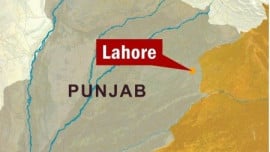

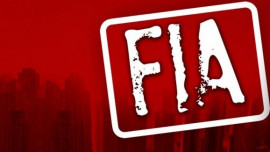
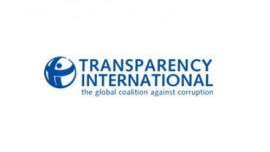

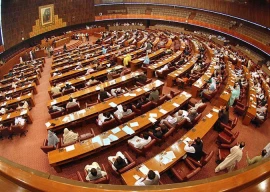

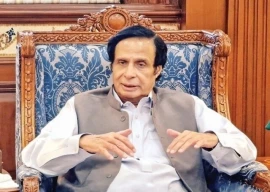
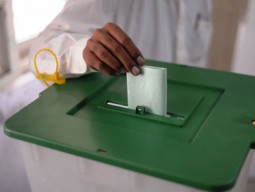





















COMMENTS (11)
Comments are moderated and generally will be posted if they are on-topic and not abusive.
For more information, please see our Comments FAQ